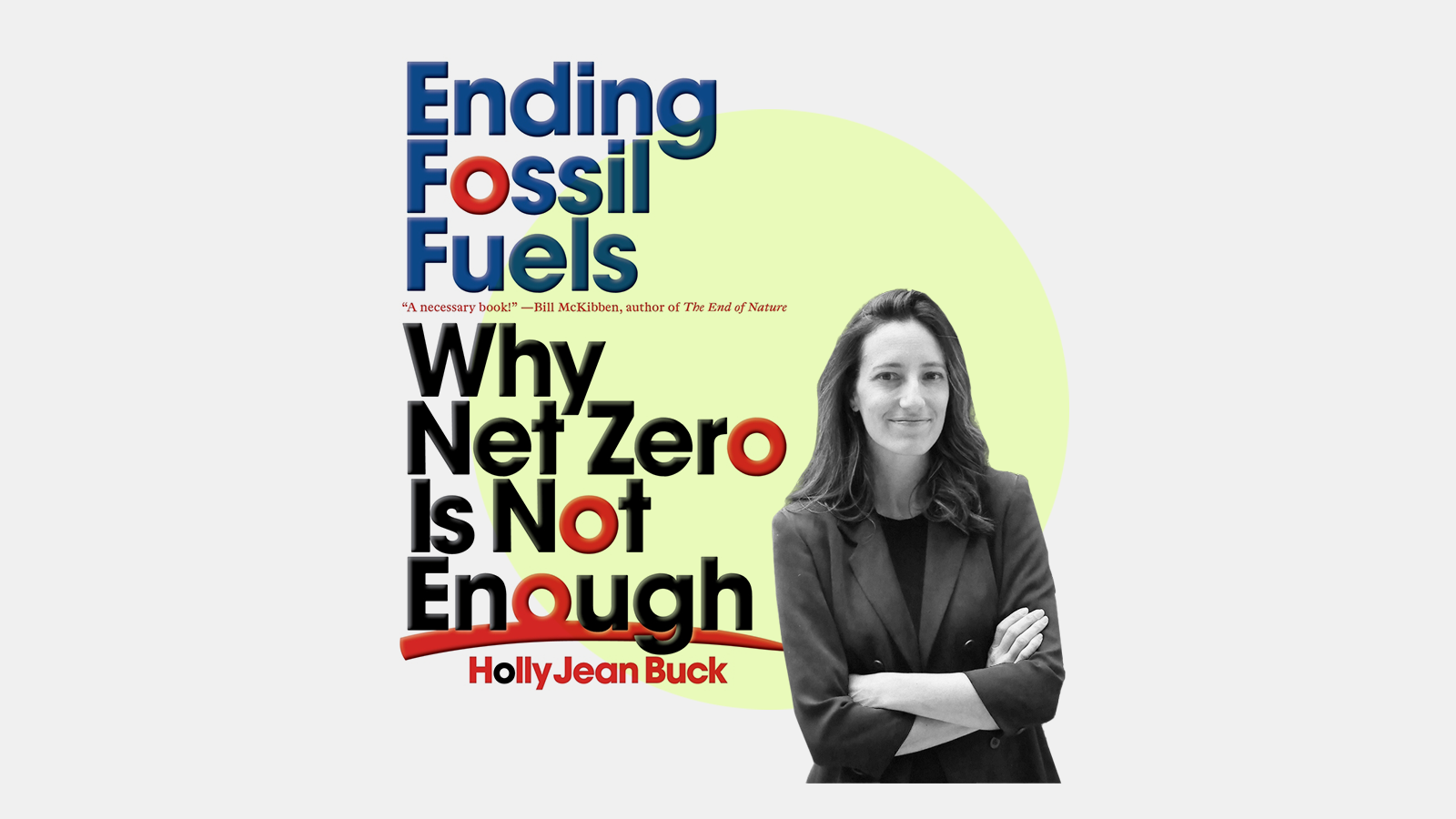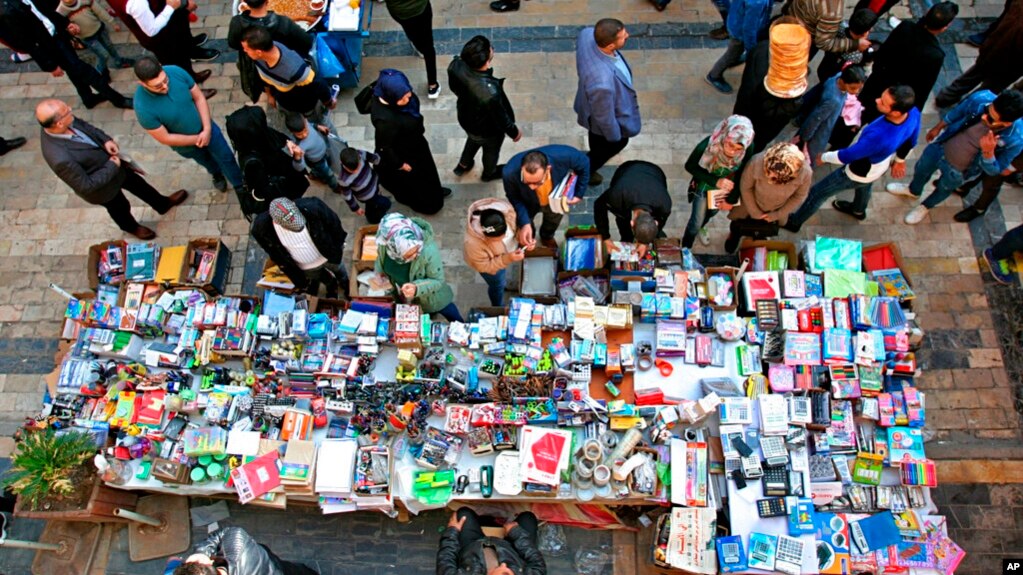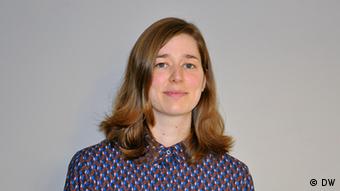Sociologist Holly Buck wants you to know that fossil fuel phaseout isn’t a "fringe" idea.

Emily PontecorvoReporter
PublishedDec 22, 2021
In just a couple of years, “net-zero” pledges have become the gold standard of climate action. According to one online tracker, more than 4,000 governments and companies around the world have pledged to go net-zero. But as the concept has caught on, it has invited fierce backlash from climate advocates who worry that it is malleable to the point of meaninglessness.
In her new book, Ending Fossil Fuels: Why Net Zero is Not Enough, sociologist Holly Jean Buck explains how striving for net-zero emissions opens up a wide range of possible futures, some of which could include lots of oil and gas. Buck argues that in addition to focusing on emissions, climate policy should be directed at phasing out fossil fuels.
A net-zero pledge is a promise to achieve a state of equilibrium. It implies that any planet-warming emissions you dump into the atmosphere will be offset by actions to pull carbon dioxide out of the atmosphere. In theory, if the whole world achieved this balance, the planet would stop heating up. But Buck writes that the phrase creates ambiguity that can be exploited by policymakers and corporate interests.
Focusing on net-zero could lead us toward a “near-zero emissions” world powered by renewable energy, or it could also lead us toward a “cleaner fossil world” where we continue burning oil and gas and build a vast network of infrastructure to capture the resulting carbon and bury or reuse it. Indeed, companies and policymakers are already promising to produce “lower carbon” fossil fuels. The U.S. Department of Energy has a new Office of Fossil Energy and Carbon Management focused entirely on meeting climate goals while minimizing the environmental impacts of fossil fuels.
Buck concedes that this cleaner fossil fuel future is technically possible but argues that ending fossil fuels is more desirable, with benefits for human health and the potential to rebalance power, restore democracy, and end corruption. The book is a guide for anyone who agrees and wants to fight for this version of the future. It asks readers to grapple with the complex realities of what a managed fossil fuel phaseout would mean in terms of geopolitics, culture, the built environment, data, and political power.
Ultimately, the book is not just about ending fossil fuels, but about building the capacity to face the end of all kinds of things — whether the end of single-use plastics, or the end of living near the coast because of climate risks. Buck invites readers to think of the end of things not as something negative, but as a way of “taking control of our own destiny.”
Grist spoke with Buck about her perspective on net-zero, her argument for public ownership of the fossil fuel industry, and why the language we use to talk about climate action is so important.
This conversation has been condensed and lightly edited for clarity.
Q.The book is about ending fossil fuels. How do you see this book in relation to the long-running movement to “keep it in the ground”?
A.It’s something I struggled with while writing the book, because there is obviously this vibrant movement that has had some amount of success in terms of shifting the discourse and social norms. At the same time, I’m concerned that shift could be mistaken for a shift in material reality. So the book is asking the movement, how do we convince people that it’s more than just a slogan or an aspiration, and that we have roadmaps for what we would need to do?
It’s also aimed at what I see as an audience of climate professionals, people who I am gently, and in solidarity, critiquing to some extent. I think there’s a lot of people who want to be more radical within the work of climate policy, and it’s an invitation to say, you know what, these radical things actually are more possible than we think. You’re not going to be fringe if you talk about them.
Q.The second part of the title is “why net-zero is not enough” — and elsewhere in the book you call net-zero a “collective delusion” — but ultimately, I don’t think this book is saying that we should aim for absolute zero emissions or advocating for some other emissions framework. Can you explain where you land with net-zero and whether it is useful?
A.I think that despite its problems, it’s useful. The utility of net-zero is both its temporal flexibility and its spatial flexibility. We have to realize that every country has its own roadmap for this transition that is shaped by history, by geography, by colonialism. It’s quite reasonable that countries will have different timelines and that countries in the Global North that have benefited from an unequal exchange should have an earlier net-zero date. They could be removing carbon — be net-negative — while other countries are still working to build out renewable infrastructure. They can balance each other out. That could ease the transition globally if we were smart and fair about it — which I know would be unprecedented given the history of injustice in all of this, but it’s something that I think we can strive for.
I do think we need absolute zero emissions at the end of the century. We have the technology on the horizon to get there by 2100, and if I was writing this book today — I wrote it a year ago — I would be more explicit about saying we should be working towards that.
Q.Is that just in hindsight, or have things changed for you or in the world to make you think that should be the goal?
A.It’s more hindsight. If we say we want full decarbonization by 2030, that just doesn’t seem credible based on the world that we’re in right now and how reliant we are on fossil fuels. But we should be spelling out what this other version of the world looks like in greater detail. I think that’s the next step — saying, OK, full zero by 2100, what will that entail?
Q.One of the things you critique in the book is the way experts have labeled certain industries as “hard to decarbonize” — that it masks the fact that distinctions of “difficulty” are political and economic, not just technical. How do you wish that people talked about this?
A.I’m semi-optimistic about what’s happening in this space. We have initiatives like the Science-Based Targets Initiative that are working to define what’s hard to decarbonize from a technical standpoint. Civil society groups can also make their way into those conversations, so that we will have a set of social norms about what’s hard to decarbonize.
What’s important is having a way to update those norms. Things that were regarded as hard to decarbonize 10 or 15 years ago, now we’re starting to see the private sector — if you believe them — take interest in decarbonizing. With shipping, for example, we’ve seen some interesting investments and commitments to developing methanol or ammonia or hydrogen that could actually decarbonize shipping if we got going with them. So we have to update our assumptions about what’s hard regularly.
Q.The book provides examples where fossil fuels with carbon capture might be a desirable option, whether it’s to save jobs, or in a geopolitical context where it’s the only solution oil-dependent countries with authoritarian governments accept. Do you think there is room for those kinds of solutions?
A.The primary aim was to help people understand the arguments that we’re going to face when we argue for phaseout. We need to know what those arguments will be and figure out compelling ways to counter them. That said, there is some ambiguity there. And part of that is because what I really believe is that this should be up to people to decide.
This is a really tricky thing about the idea of energy democracy. What if you have an overwhelming majority in a place that wants electricity from gas with carbon capture and storage over 100 percent renewables because they’ve appraised the trade-offs and that’s what they think is better? Are we going to say, “OK, that’s what people wanted”? These are hard questions. I don’t have the answer, but I think we need to be talking about that because it’s going to come up.
Q.Towards the end, you make an argument for public ownership of fossil fuel companies. I’m wondering why you’re so optimistic about public ownership, or why anyone should be, given that we have many public institutions that don’t work very well today?
A.This isn’t something that I see working without a broader revolution to a better form of democracy than this neoliberalized, dysfunctional form of democracy that we have right now. So I think you’re absolutely right that this vision of public ownership of things like fossil fuels doesn’t work with what we have today.
This is why the book is actually about a lot more than fossil fuels. It’s about developing democratic planning capabilities for ending all sorts of things that are harming us, whether that’s single-use plastics or pesticides or even social practices. I do think that things like ending fossil fuels or breaking up tech companies can create a self-reinforcing loop with being able to build democratic power. I know this sounds like idealist, activist stuff, but what’s the alternative? The alternative seems totally bleak, so we might as well try for the best case.
Q.In this book, and throughout your other work on climate change, you’re often advocating for new language. Why is that so important to you?
A.This is fundamentally, for me, a cultural shift as much as it would be a shift in energy or infrastructure. For example, do we talk about “ending,” do we talk about “managed decline,” do we talk about “phaseout”? How do we understand that as something that’s actually empowering? Not a decline, but opening up space to build something new that’s amazing. Language is important for unlocking these things. And it needs to be a language that resonates with people in rural areas, with conservative voters, with workers in fossil fuel industries. If it doesn’t work there, it’s going to fail.
I don’t go very far proposing what this language should be because it needs to be invented in conversation with the people who live in all of these places, otherwise it’s not going to take hold. So creating new language is also about listening as much as it is about generating.























